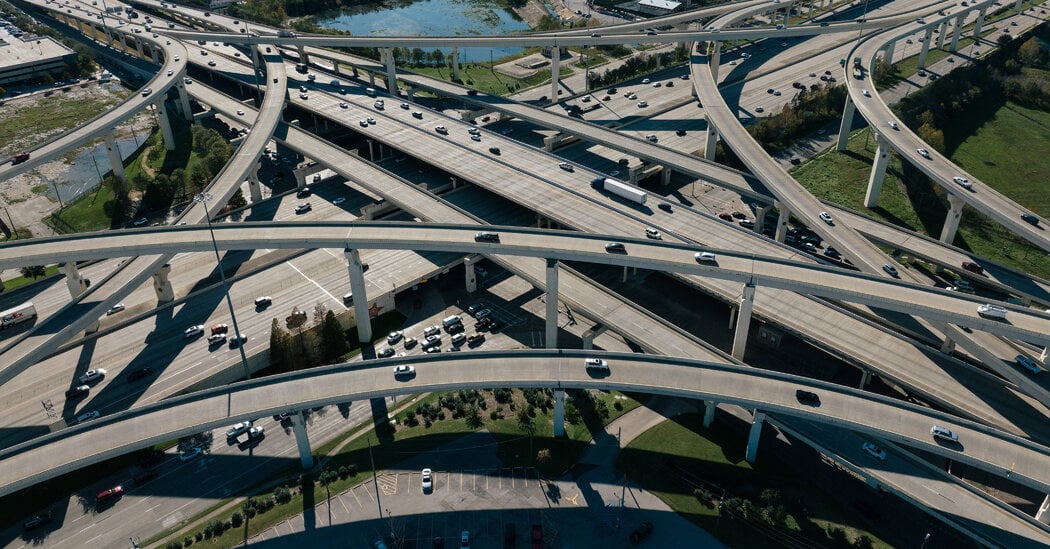For critics of widening projects, the prime example of induced demand is the Katy Freeway in Houston, one of the widest highways in the world with 26 lanes.
Immediately after Katy’s last expansion, in 2008, the project was hailed as a success. But within five years, peak hour travel times on the freeway were longer than before the expansion.
Matt Turner, an economics professor at Brown University and co-author of the 2009 study on congestion, said adding lanes is a fine solution if the goal is to get more cars on the road. But most highway expansion projects, including those in progress in Texas, cite reducing traffic as a primary goal.
“If you keep adding lanes because you want to reduce traffic congestion, you have to be really determined not to learn from history,” Dr. Turner said.



The conclusions in the article are bizarre. The widening worked, and as the population increased, the congestion increased in those areas.
The solution is stop upping population density in population dense areas.
You just can’t pack that many people in per square mile and make it work, regardless of if we are using cars or not.
Yes you can. Other cities have far higher densities and their public transit keeps people moving just fine.
I’m sorry you’ve been brainwashed in to thinking individual cars are the pinnacle of efficient transport…
No…no it doesn’t…where does your eutopia actually exist? Does it have a growing population center?
This is where someone says the Nordic countries usually…the problem with that example is the US is what…20-50x bigger.
You’re not biking across your state…more or less the whole of the US. You also might want to take a harder look at their cultures and see how they deal with no homogeneous populations…it’s not pretty.
Just because the US has more space, that doesn’t mean it has to be filled with unsustainably sparse development.
And you’re correct—you’re not biking across your state, but the average resident of Amsterdam isn’t bicycling across the entire Netherlands, just to all of the amenities which are in reasonable walking/biking distance with the infrastructure to safely facilitate it.
Sure you can, you just have to make sure that the people have multiple forms of viable transport beyond getting in their cars. Trains, bike lanes and trails, walkability improvements, etc. Of course there’s an upper limit to density, but that density can be more thoughtfully designed and built. Mixed-use development is essential.
This is completely backwards. Increasing population density means people can afford to live closer to work & resources. Low density means they have to drive 50 miles a day to get anywhere, and thus need more lanes.
Think about this…ever been to a large sporting event in a huge arena? Think of a sold out NFL game. The stadiums are designed to get people in and out quickly. Lots of people in a out quickly.
It’s a fucking disaster, every game, every time.
Now imagine doing that daily just to get to work. That’s what you’re proposing here.